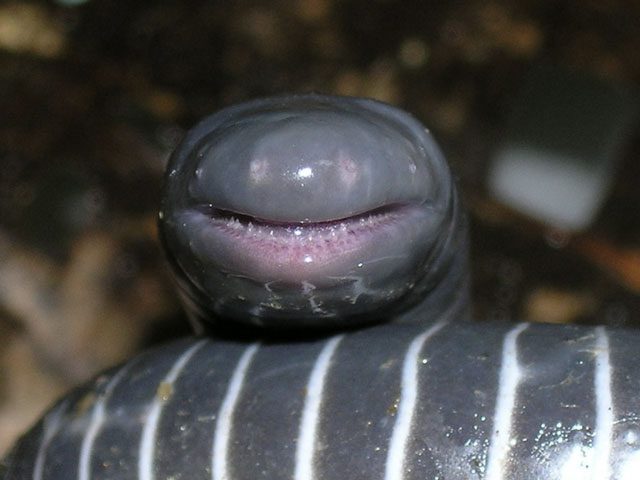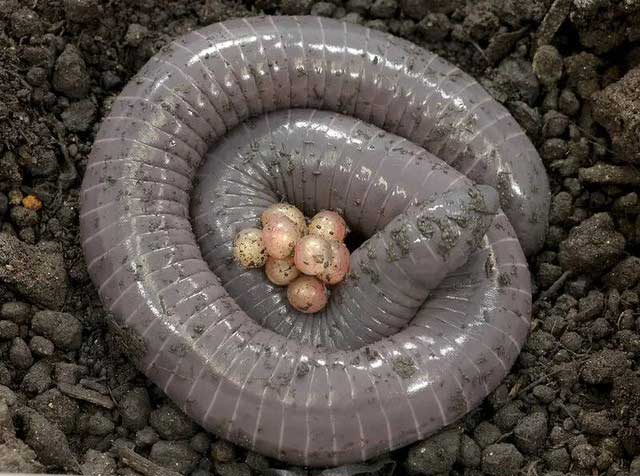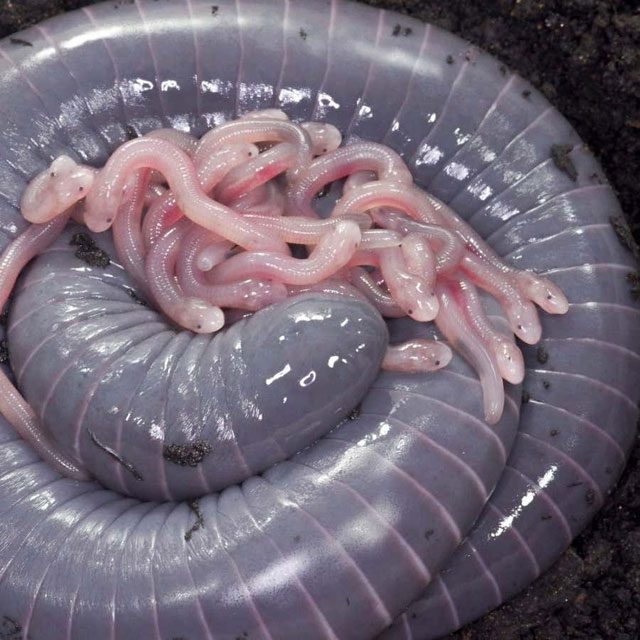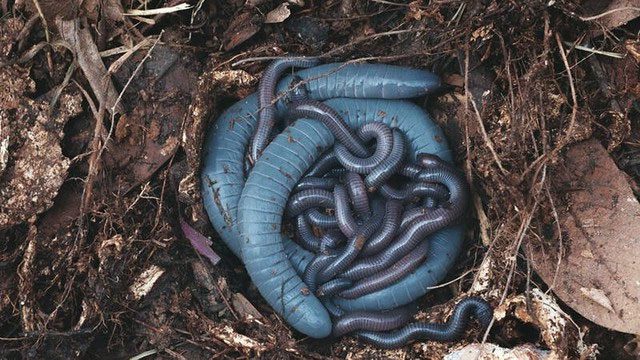After studying and observing the Ringed Caecilian (Siphonops), researchers have discovered that these creatures possess unusual parental care methods, including milk production and egg-laying.
Researchers in Brazil have identified the first known egg-laying amphibian species that nurses its young with “milk.” Unlike mammals, this roundworm species produces nutrient-rich milk from its tail.
Furthermore, this milk supplements a protein-rich skin layer that the mother develops to nourish her offspring. This discovery is changing scientific understanding of amphibian reproductive behavior.

All caecilian species have limited vision and can only distinguish light from dark with their primitive eyes. Despite being called worms, they are actually vertebrates. Their skulls are strong, thick, and pointed, with many of their bones fused to increase rigidity. Their mouths are positioned further back, beneath their heads, to prevent mud from getting stuck in their teeth, and they have concentric muscle rings that function like a piston. They can also swim and possess sensory nodules on their faces that are believed to be used for smelling.
The Ringed Caecilian (Siphonops) is one of 220 known caecilian species—a group of limbless amphibians that spend most of their lives underground. Some caecilian species give birth to live young, while others lay eggs.
Carlos Jared, the lead author of the study published in the journal Science and a biologist at the Butantan Institute in São Paulo, told Popular Science: “They are among the least understood amphibian species due to the difficulty in accessing these creatures.”
The elusive nature of this organism makes exploring its milk-producing abilities challenging. In fact, without the nature documentaries from BBC, researchers might not have observed this unique parenting strategy of the roundworm.

Siphonops eggs are laid in a small burrow, where the mother curls up to protect the eggs. When the young hatch, they begin to rush towards the mother and scrape her skin with 44 spoon-shaped teeth. This process lasts for a frenzied seven minutes. Between feedings, the mother caecilian continuously regenerates her skin, replenishing lipids to help the young grow rapidly.
More than a decade ago, a film crew working on the Life in Cold Blood series in 2008 captured rare footage of a female Ringed Caecilian with her offspring. The young amphibians appeared “frantic,” tearing at their mother’s skin. Subsequently, researchers discovered that the mothers had developed an outer layer rich in protein to nourish their young.
Co-author of the study, Marta Antoniazzi, another researcher at the Butantan Institute, told Scientific American: “We were so captivated by this that we overlooked many other behaviors we observed.”
This initial footage encouraged researchers to delve deeper into the parenting strategies of the Ringed Caecilian. What they found has transformed their understanding of the behavior of this amphibian species.

This species was initially discovered in Argentina and has been recorded in Bolivia, Brazil, Colombia, Ecuador, French Guiana, Guyana, Paraguay, Peru, Suriname, and Venezuela. Their natural habitat consists of tropical or subtropical moist lowland forests, dry savannas, moist savannas, tropical or subtropical moist shrubland, tropical or subtropical seasonally flooded or inundated grasslands, grasslands, plantations, rural gardens, and previously severely degraded forests.
Researchers decided to closely examine the BBC footage and note any other unusual behaviors. Initially, they observed that the young caecilians often positioned themselves near the mother’s cloaca—a posterior opening serving urinary, digestive, and reproductive purposes.
Jared told Scientific American: “The heads of the young are always close to the mother’s cloaca. Some even poke their heads inside and seem very excited.”
The research team opted to compare the intestines, bladders, cloacas, and oviducts of female caecilians with and without offspring. In the oviducts of the mothers, they found large glands filled with fatty acids and sugar-rich milk.
The composition of this “milk” closely resembles that of mammalian milk.
Additionally, researchers discovered that the young wriggle near the cloaca and emit high-pitched sounds to encourage the mother to secrete milk. This phenomenon can occur up to six times a day. This behavior had never been previously observed in amphibians.

The Ringed Caecilian ranges from 28-45 cm in total length and has a body diameter of 12-20 mm. The typical lifespan of a Ringed Caecilian is about 1-2 years. Their mouths contain dozens of sharp, needle-like teeth, and they swallow their food whole. They typically feed on soil-dwelling invertebrates such as termites, beetle larvae, and mollusks. They can also consume small snakes, frogs, lizards, and other worms.
Now, researchers say these findings provide deep insights into how this worm species has evolved.


















































